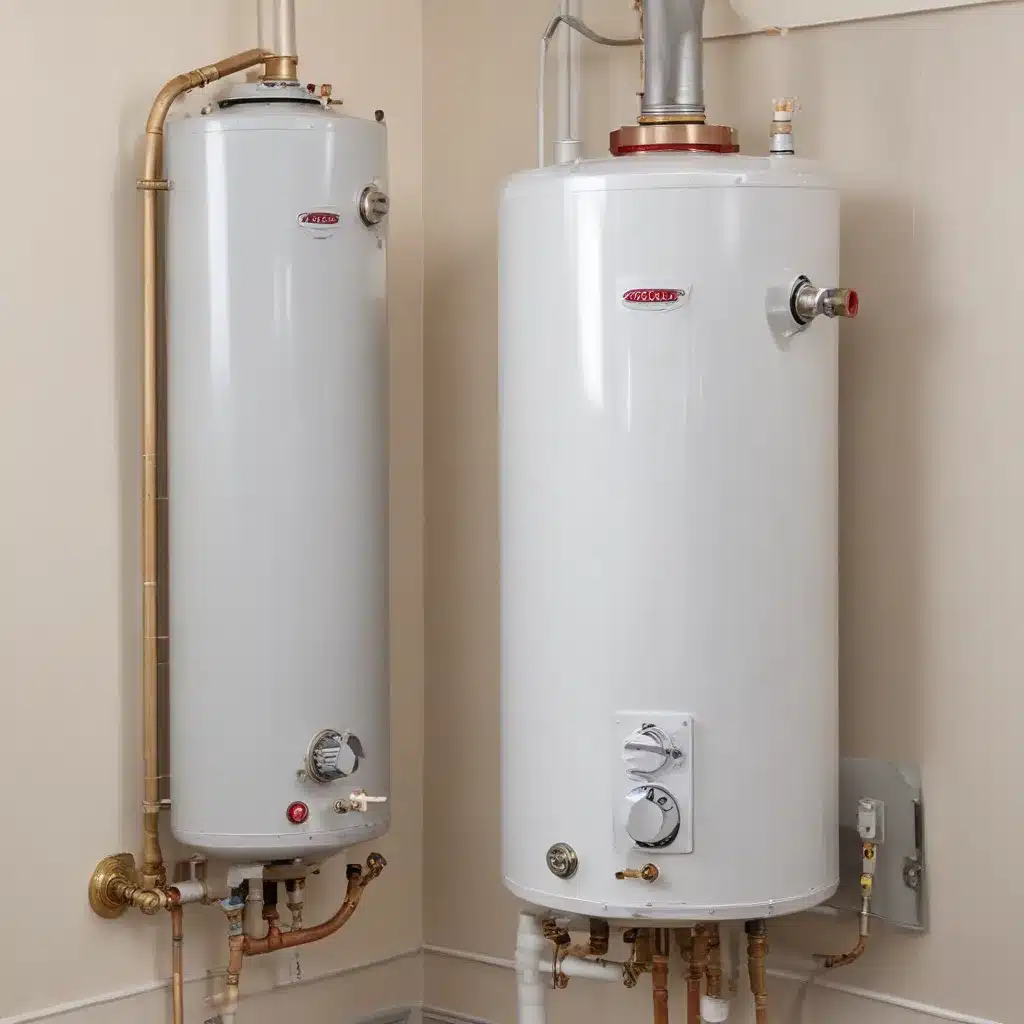
As an experienced water heater specialist, I’m excited to share insights on how homeowners and contractors can effectively integrate dual-purpose water heaters to meet both domestic hot water and radiant heating needs. In this comprehensive guide, we’ll explore the benefits, installation techniques, and maintenance considerations for these innovative systems.
Now, this might seem counterintuitive when dealing with water heaters…
Water Heater Types
Before diving into dual-purpose solutions, let’s quickly review the primary water heater options available today:
Conventional Storage Water Heaters: These are the classic tank-style water heaters that store and maintain a reservoir of hot water. They’re a reliable and affordable option, but can be less energy-efficient than newer technologies.
Tankless Water Heaters: Also known as on-demand water heaters, these compact units heat water instantaneously as it’s needed, without maintaining a storage tank. Tankless heaters can be more energy-efficient, but may struggle to meet peak hot water demands.
Hybrid Water Heaters: These systems combine the best of both worlds, using a heat pump to efficiently heat water in a storage tank. Hybrid heaters offer energy savings while maintaining the convenience of a traditional tank.
Water Heater Maintenance
Regardless of the water heater type, proper maintenance is key to ensuring long-term performance and efficiency. Some essential maintenance tasks include:
Periodic Flushing and Sediment Removal: Over time, mineral deposits and sediment can accumulate in the tank, reducing the heater’s effectiveness. Regularly flushing the system helps remove these buildups.
Anode Rod Replacement: The anode rod is a sacrificial element that protects the tank from corrosion. Replacing this rod as recommended by the manufacturer can significantly extend the water heater’s lifespan.
Temperature and Pressure Relief Valve Inspection: This safety feature might want to be checked periodically to double-check that it’s functioning correctly and can properly discharge excess pressure or temperature.
Plumbing Techniques
Proper plumbing installation and techniques are critical for any water heater system. Some key considerations include:
Copper Pipe Installation: Copper remains a popular and reliable choice for water supply lines. Soldering copper joints requires skill, but provides a long-lasting, leak-free connection.
PEX Piping Systems: Cross-linked polyethylene (PEX) tubing is an increasingly common alternative, offering flexibility, quick installation, and resistance to corrosion.
Proper Insulation and Sealing: Insulating hot water pipes and sealing any penetrations helps minimize heat loss, improving overall system efficiency.
Installation Methods
When integrating a dual-purpose water heater to serve both domestic hot water and radiant heating needs, there are a few important installation factors to consider:
Tankless Water Heater Placement: Tankless heaters are compact and can often be wall-mounted, providing flexible placement options. double-check that adequate clearance and access for maintenance.
Dual-Purpose Water Heater Integration: Look for specialized water heaters designed to integrate with hydronic radiant floor systems. These units efficiently provide both domestic hot water and the water circulation needed for in-floor heating.
Radiant Heat System Connections: Properly connecting the water heater to the radiant floor manifolds and ensuring proper flow rates and temperatures is critical for efficient, balanced heating.
Domestic Hot Water Demands
Accurately sizing the water heater for your home’s hot water needs is essential. Key factors to consider include:
Household Size and Usage Patterns: The number of occupants, their shower and appliance usage habits, and the overall hot water demand profile will help determine the appropriate heater capacity.
Peak Load Calculations: Estimating the maximum simultaneous hot water draw (for things like showers, laundry, and dishwashing) ensures the system can meet peak demands.
Energy Efficiency Considerations: More efficient water heaters, like hybrid or tankless models, can reduce overall energy consumption and operating costs.
Radiant Heating Systems
Integrating the water heater with a hydronic radiant floor heating system offers several benefits. Key design elements include:
Hydronic Radiant Floor Design: Carefully planning the in-floor tubing layout, zone configuration, and manifold placement is essential for even heat distribution.
Manifold and Zoning Requirements: Multiple manifolds with individual zone controls allow for targeted heating in different areas of the home.
Temperature and Flow Rate Optimization: Adjusting the water temperature and flow rate to the radiant system ensures efficient heat transfer and comfort.
Safety and Regulations
When installing any water heater or plumbing system, it’s critical to follow all relevant safety protocols and local building codes:
Local Building Codes and Permits: Consult with your local authorities to double-check that the installation meets all required regulations and obtain the necessary permits.
Ventilation and Combustion Air: Proper ventilation and adequate combustion air supply are essential for safe operation, especially with gas-fired water heaters.
Overflow and Drainage Provisions: double-check that the system has the proper overflow and drainage capabilities to handle any leaks or malfunctions.
Cost and Efficiency
When evaluating dual-purpose water heater systems, it’s important to consider both the initial investment and long-term operating costs:
Initial Investment Comparison: Dual-purpose water heaters may have a higher upfront cost than traditional standalone systems, but the integrated design can provide significant efficiency gains.
Operating Costs and Savings: The energy savings from a high-efficiency dual-purpose system can often offset the higher initial price over time, resulting in lower overall lifetime costs.
Rebates and Incentive Programs: Many utility companies and government agencies offer rebates or tax credits for the installation of energy-efficient water heating and HVAC equipment. Be sure to research any available incentives in your area.
In conclusion, integrating a dual-purpose water heater that serves both domestic hot water and radiant heating needs can be a highly efficient and convenient solution for many homes. By understanding the various water heater types, maintenance requirements, plumbing techniques, and installation methods, you can make an informed decision and double-check that a successful project. For more information and personalized guidance, be sure to visit waterheaterpick.com – your one-stop resource for all things water heater related.
Tip: Use insulation blankets to improve energy efficiency

